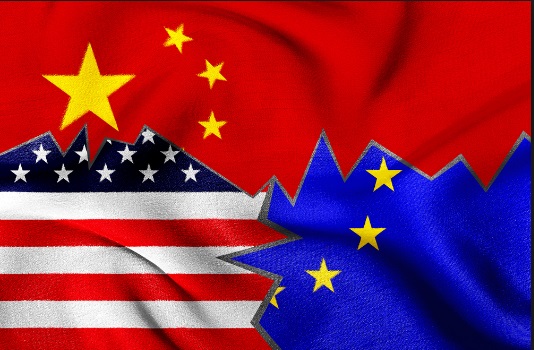 Contrary to the expectations of industry executives and analysts, China is directly targeting certain chemicals and polymers as it rolled out its list of $50bn in retaliatory tariffs against US imports.
Contrary to the expectations of industry executives and analysts, China is directly targeting certain chemicals and polymers as it rolled out its list of $50bn in retaliatory tariffs against US imports.
“China has made it clear it doesn’t want a trade war but isn’t going to roll over if Trump wants it. China’s had over a year to plan for this, and you can see the tariffs are very carefully targeted,” said Paul Hodges, chairman of International eChem.
China did not mention a specific date for the 25% tariffs to take effect. It should be an effective bargaining chip against US tariffs. “Calling out chemicals explicitly… [is] likely to be more of a warning shot rather than a significant disruption for the industry. Trade flows should adjust relatively quickly, and most chemical companies have significant local production in China,” said Jefferies analyst Laurence Alexander.
It’s still a shock. Delegates at the International Petrochemical Conference (IPC) hosted by the American Fuel & Petrochemical Manufacturers (AFPM) in San Antonio, Texas, in late March saw very little chance US chemicals would be directly targeted.
ICIS senior consultant John Richardson has been warning about the threat to US chemical exports in the ICIS Asian Chemical Connections Blog, where he saw $12.4bn of US chemical exports at risk.
Chemicals comprise about 40% of the list of 106 US products targeted by China tariffs, including polyethylene (PE), polycarbonate (PC), polyvinyl chloride (PVC), acrylonitrile (ACN), catalysts, lubricants, epoxy resin, acrylic polymers, vinyl polymers and polyamides.
“Oddly, neither styrene nor ethylene glycol were on the list – the two single largest volume chemicals exported from the US to China,” said Jonas Oxgaard, chemicals analyst at Bernstein.
The analyst does not expect the tariffs to have a US price impact, as the listed chemicals are a small percentage of US exports.
“For example, only around 6% of LDPE/LLDPE exports go to China, and out of those 6%, half are specialty grades,” said Oxgaard.
However, the US is gearing up for a huge wave of PE capacity coming on in 2018 and 2019, with much of it targeted for export. The tariffs include linear low density PE (LLDPE), most grades of LDPE, and medium density PE (MDPE) but excludes high density PE (HDPE).
“LLDPE may be the most impacted polymer volume wise, with 4.3% of the US production exported to China in 2017,” said James Ray, senior ICIS consultant.
GLOBAL PRICE WAR
A global price war becomes more likely if US product meant for China is diverted elsewhere, say Europe.
“The US is not going to stop producing. The potential for a price war was already high, but with tariffs, it would be a near certainty,” said Hodges. “There are two giants in the room – ethane-based integrated producers, and refinery-based integrated producers. They are… [going to] run full out. Everyone else better think of alternative plans and fast.” US PE volumes under tariff going to China would be extremely uncompetitive. “You can’t get through a 25% tariff barrier with something as commoditised as PE or PVC,” said Hodges.
PRICES TO ACTUALLY RISE?
A contrarian view is that global PE prices could actually rise. “If China buys from a source other than the US, that source will not have product for all of its current customers and US producers will fill the void,” said Cowen analyst Charles Neivert. “This may be a bit more costly because it will take multiple customers to fill the China volume. Ultimately, it might have the effect of raising the global price, since the US ‘price’ has just gone up by 25%.”
A China tariff on US PE could also limit additional global capacity. “Such an announcement would certainly disincentivise producers from embarking on the next wave of capacity additions in the US, making an already tight market tighter,’ said Alembic Global Advisors analyst Hassan Ahmed.
Wells Fargo analyst Frank Mitsch urged investors to keep it in perspective. The US is “vastly advantaged” as it costs just 13 cents/lb to produce 1 lb of ethylene from ethane versus 42 cents/lb for naphtha, he said.
The American Chemistry Council (ACC) is understandably concerned. China imported 11%, or $3.2bn of all US plastic resins produced in 2017. And the US exported $11.5bn of chemicals and polymers, or 9% of its overall chemical exports, to China in 2017, according to the trade group.
